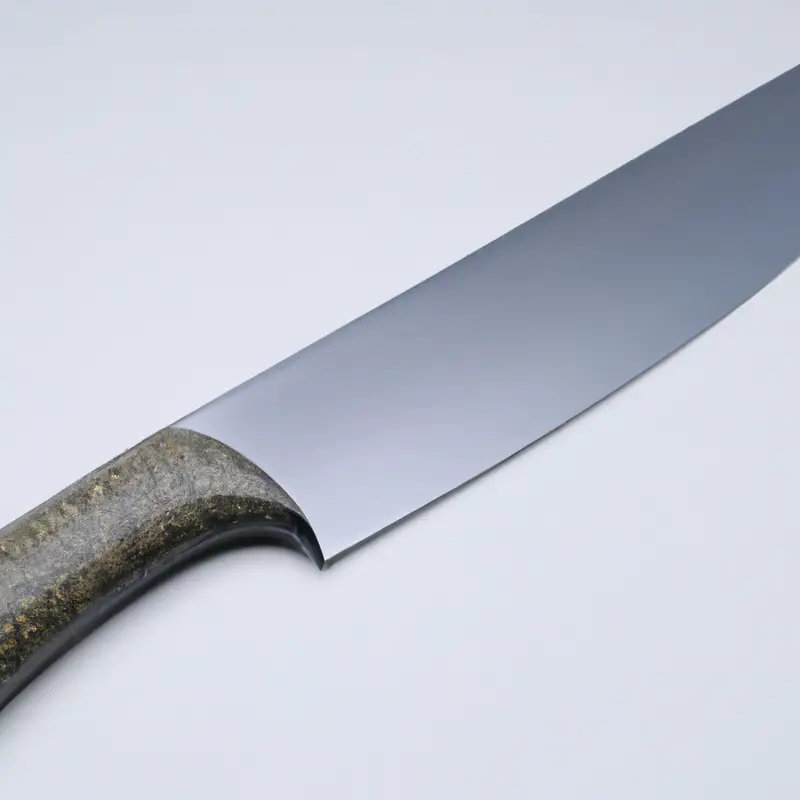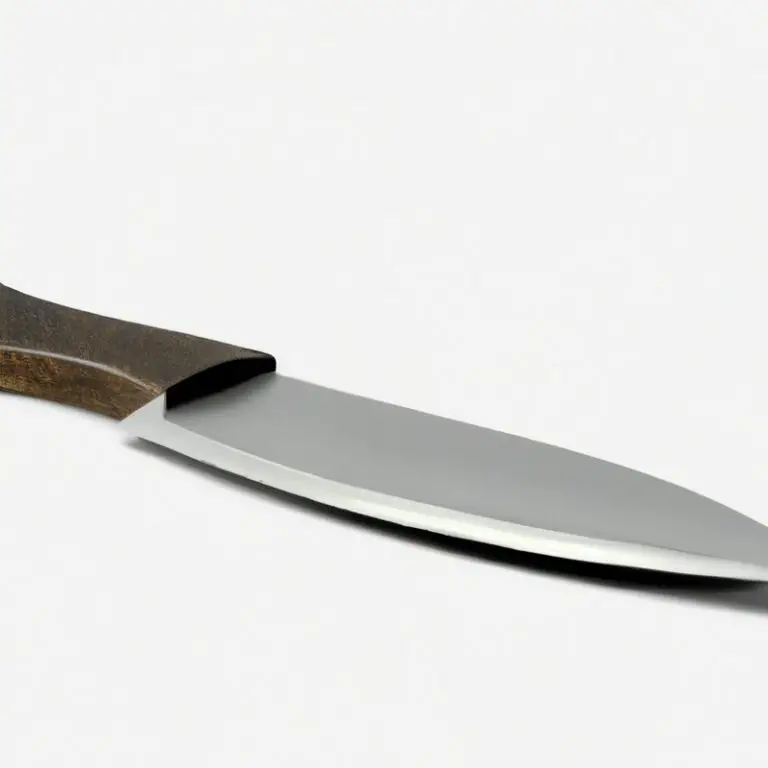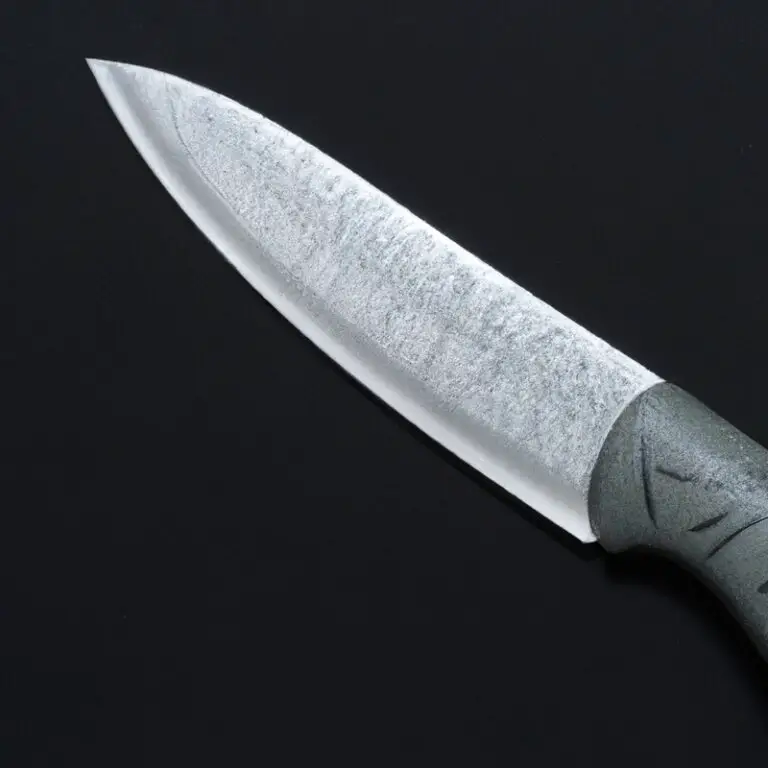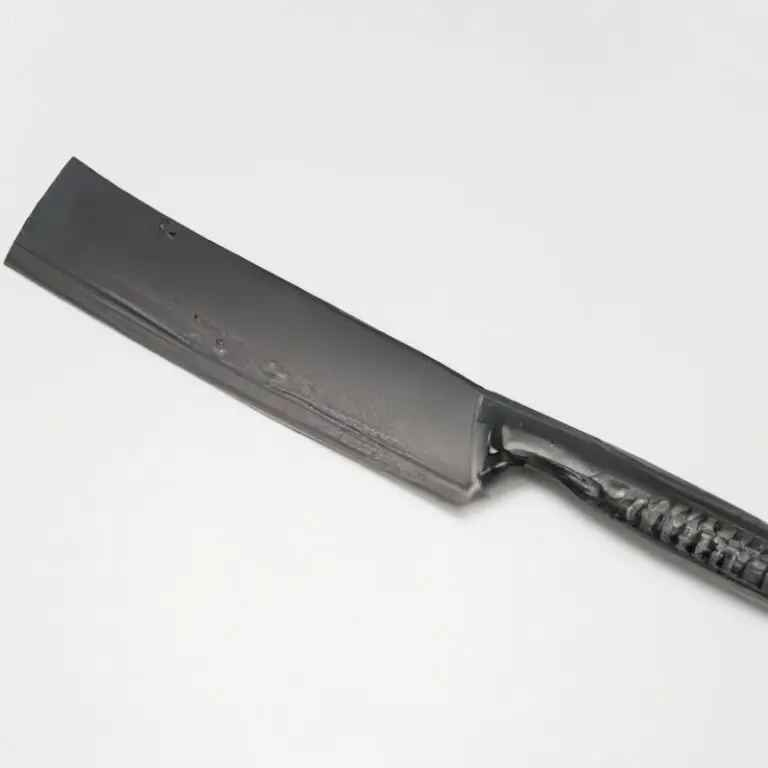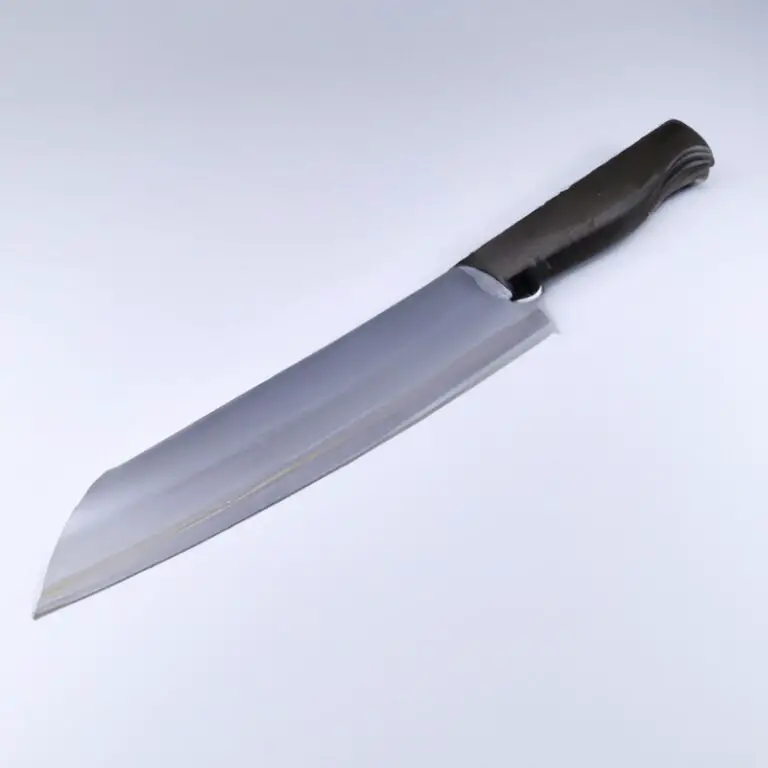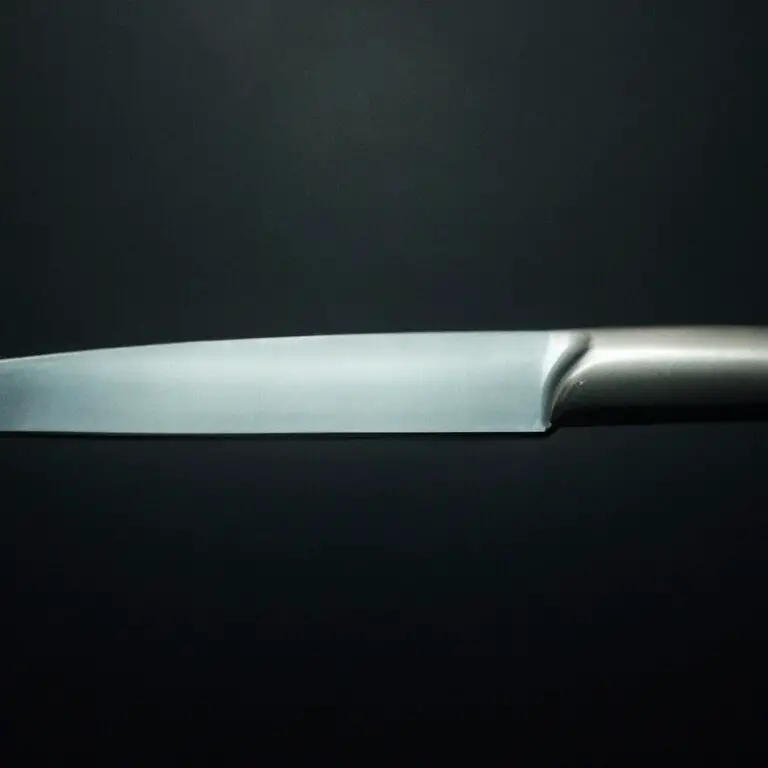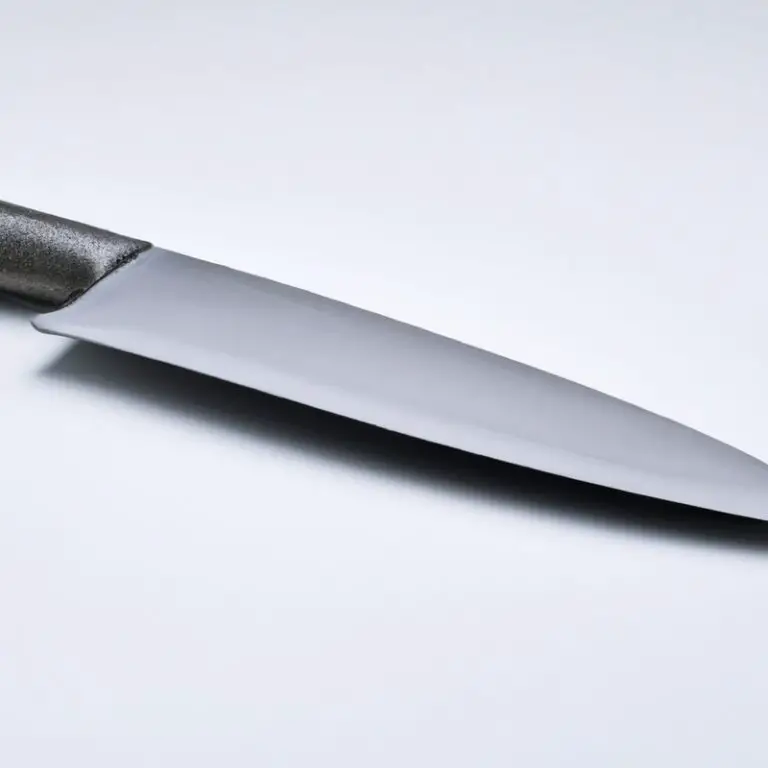How To Protect The Cutting Edge Of a Gyuto Knife? Tips
Key Takeaways:
- Proper upkeep of the cutting edge is crucial for maintaining the longevity and effectiveness of a Gyuto knife.
- Regular honing and sharpening can prevent the blade from becoming dull and mitigate the risk of injuries during use.
- Investing in a high-quality honing and sharpening tool can make the maintenance process more efficient and effective.
- Consistent cleaning and storage in a safe and dry location can further protect the cutting edge of the Gyuto knife.
As a chef, I know first hand the importance of a sharp and well-maintained knife. That’s why I want to talk about the Gyuto knife, a versatile and popular Japanese knife that requires special care to preserve its cutting edge.
In this article, we’ll cover essential tips to keep your Gyuto knife in top condition, from proper maintenance techniques to common mistakes to avoid.
We’ll also explore how cutting surfaces and storage play a significant role in the protection of your knife edge. So, let’s dive into the world of Gyuto knife care and discover how to keep it sharp and reliable for years to come.
| Method | Description |
|---|---|
| Using a knife guard | A knife guard is a plastic or wooden cover that fits over the blade of a knife. It can prevent the cutting edge from getting damaged during storage or transportation. |
| Storing the knife properly | Store the knife in a knife block, on a magnetic strip, or in a drawer with a knife insert that keeps the blade protected from other utensils. |
| Sharpen regularly | A sharp knife is less likely to get damaged than a dull one. Regular sharpening can help keep the blade in good condition and prevent damage to the cutting edge. |
| Use a cutting board | Using a cutting board can help protect the cutting edge of the knife from damage caused by cutting on hard surfaces like plates or countertops. Choose a cutting board made of wood or plastic to avoid damaging the blade. |
Understanding the Anatomy of a Gyuto Knife: Protecting the Cutting Edge
The anatomy of a Gyuto knife includes the cutting edge, which is the most important part of the knife. Protecting the cutting edge is crucial for maintaining the knife’s functionality and longevity.
The cutting edge is made up of microscopic teeth, and any damage or wear to these teeth will compromise the knife’s sharpness.
The angle of the cutting edge, measured in degrees, is another essential component of the anatomy that impacts the knife’s cutting power. To protect the cutting edge, it is essential to avoid using the knife on hard surfaces, like countertops or bones, as this can cause chips and dullness.
Using the right cutting board and sharpening tools also play a vital role in protecting the cutting edge.
Sharpening should be done regularly, and honing can be used between sharpenings to keep the cutting edge aligned. Proper storage, such as using a knife block or sheath, can prevent damage from other kitchen tools.
Understanding the anatomy of a Gyuto knife and implementing proper maintenance techniques will protect the cutting edge and keep the knife performing at its best.
The Importance of Maintaining a Sharp and Clean Cutting Edge on a Gyuto Knife
Maintaining a sharp and clean cutting edge on a Gyuto knife is crucial for ensuring optimal performance. A dull or damaged edge can compromise the knife’s effectiveness, leading to a frustrating and potentially dangerous experience.
A sharp edge allows for clean and effortless cuts, reducing the chances of slips and injuries.
Additionally, keeping the blade clean and free of debris can prevent contamination and prolong the knife’s lifespan. Regular maintenance of the cutting edge through proper sharpening and cleaning techniques is essential for achieving the best results from a Gyuto knife.
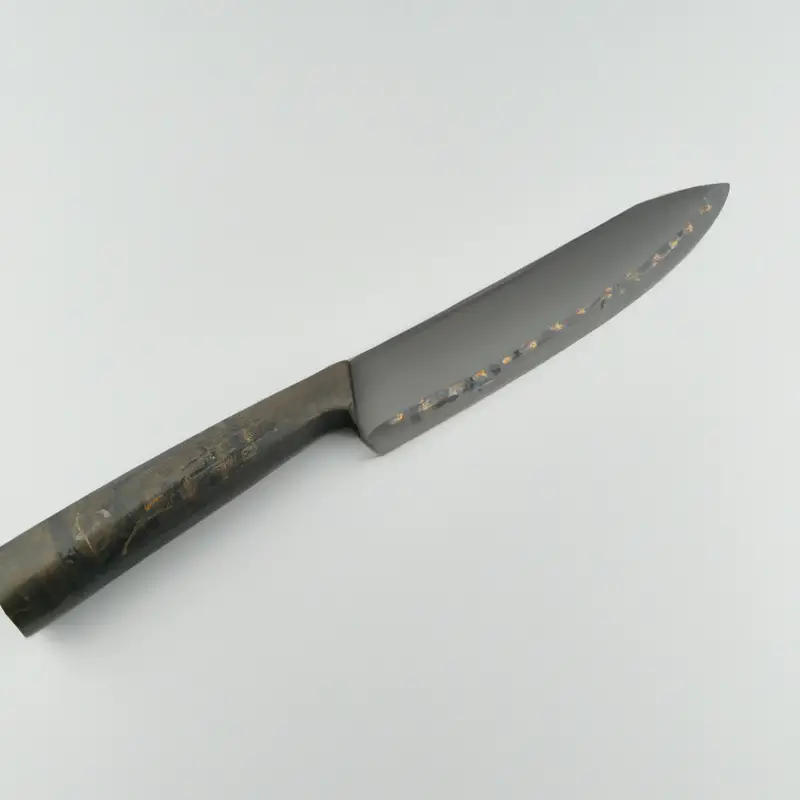
The Do’s and Dont’s of Gyuto Knife Edge Maintenance
Do’s:
- Use a sharpening stone to maintain the correct angle of the blade.
- Clean and dry the blade after every use to prevent rust and corrosion.
- Store the knife in a knife block or sheath to protect the blade from damage.
- Use a honing rod regularly to maintain the edge of the blade.
- Sharpen the blade regularly to keep it sharp and efficient.
- Use a cutting board made of soft materials like wood or plastic to avoid damaging the blade.
Dont’s:
- Don’t put the knife in the dishwasher as it can damage the blade.
- Don’t use a glass or metal cutting board as it can damage the blade.
- Don’t use a dull blade as it can cause injury and damage to the blade.
- Don’t use a serrated sharpener on the blade as it can damage the edge.
- Don’t use excessive force while cutting as it can cause the blade to chip or break.
- Don’t leave the knife in water for a long time as it can cause rust and corrosion.
Beyond Whetstones: Other Tools for Gyuto Knife Edge Maintenance
Beyond whetstones, there are other tools that you can use to maintain the edge of your Gyuto knife. Here are three tools you might want to consider:
- Honing rods: Honing rods are long, slender metal rods that help to straighten and realign the knife’s edge between sharpening. They won’t sharpen a dull blade, but they can be useful for keeping the edge in good shape between sharpenings.
- Leather strops: A strop is a piece of leather used to polish and refine the edge of a knife. Leather strops can be used with or without compound (a fine abrasive substance to create a razor-sharp edge. Stropping is an effective way to refine and maintain an already sharp edge.
- Ceramic honing rods: Ceramic honing rods are similar to steel honing rods but are made of abrasive ceramic instead. They can be an excellent tool for maintaining the edge of a knife between sharpenings. Ceramic honing rods are gentler on knives and can help to extend the life of your blade.
Honing and Stropping Techniques to Extend the Life of a Gyuto Knife’s Cutting Edge
Honing is the process of straightening the edge of a Gyuto knife, which helps it maintain sharpness for longer. Stropping involves polishing the edge of the knife and removing any remaining burrs.
Both techniques should be used regularly to extend the life of the knife’s cutting edge.
To hone a Gyuto knife, use a honing rod or a sharpening stone. Hold the rod or stone at a 20-degree angle to the blade and run the blade along its length, applying gentle pressure.
Repeat on the other side of the blade, alternating until the edge is straightened.
Stropping can be done with leather strops or compound-treated strops. The blade should be held at a slightly steeper angle than honing and pulled backwards across the strop’s surface.
Repeat on the other side of the blade until the edge is polished.
It’s essential to maintain a consistent angle throughout honing and stropping to avoid damaging the edge. Strive for a sharp edge rather than a perfectly polished one as over-polishing can lead to a weak and less effective edge.
Incorporating honing and stropping into a regular maintenance routine can prolong the life of a Gyuto knife’s cutting edge.
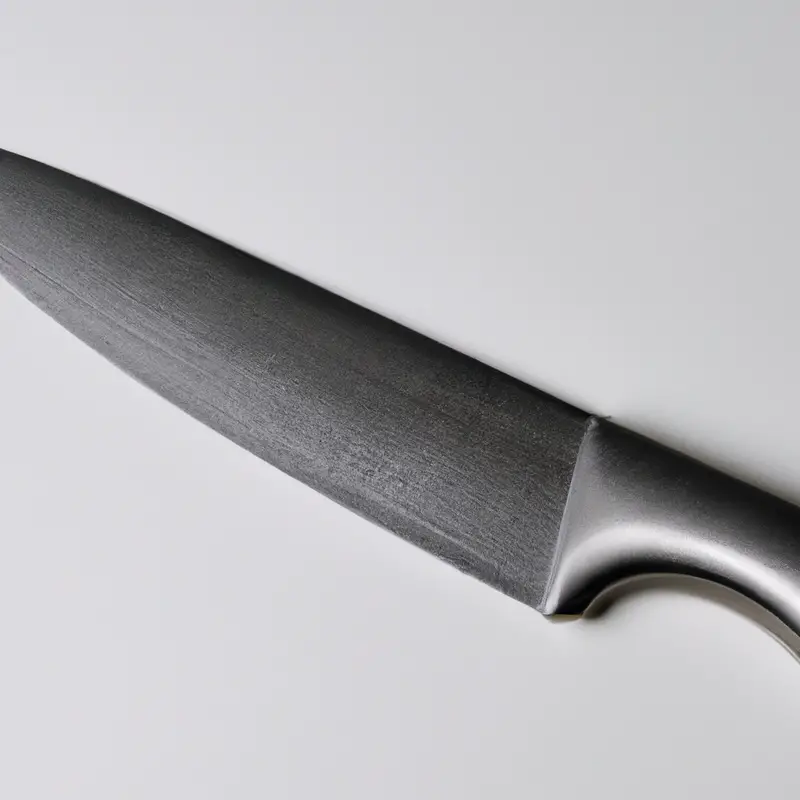
The Role of Cutting Surfaces in Gyuto Knife Edge Protection
The type of cutting surface used can impact the protection and longevity of a Gyuto knife’s cutting edge. A hard cutting board made of wood or bamboo is preferred over soft materials like plastic or glass.
Soft surfaces can dull the blade faster as they don’t provide enough resistance, while hard surfaces allow for a more controlled cut, reducing the chances of the knife slipping and damaging the edge.
It’s important to avoid cutting on hard surfaces like plates or granite countertops, which can cause chips or cracks in the blade. A well-maintained cutting surface can help preserve the sharpness of a Gyuto knife’s cutting edge and extend its lifespan.
The Importance of Proper Storage to Protect the Cutting Edge of a Gyuto Knife
Proper storage of a Gyuto knife is crucial to maintain its sharpness and protect its cutting edge. Storing a knife in a drawer with other utensils can result in scratches and nicks on the blade.
To avoid this, it is recommended to store the knife in a protective sheath or a knife block.
Additionally, storing a knife in a moist environment can lead to rust and corrosion. Therefore, make sure the knife is completely dry before storing it.
Proper storage not only protects the knife’s cutting edge but also increases its longevity, making it a worthwhile investment.
Common Mistakes to Avoid When Protecting the Cutting Edge of a Gyuto Knife
When it comes to protecting the cutting edge of a Gyuto knife, there are a few common mistakes to avoid. Firstly, never store your knife unsheathed, as it can lead to accidental damage to the cutting edge.
Additionally, avoid cutting on hard surfaces, such as ceramic plates or granite countertops, as this can dull the blade quickly.
Another mistake is not cleaning and drying the knife immediately after use, which can lead to corrosion and rust on the edge. Lastly, avoid using abrasive sponges or harsh chemicals to clean the blade, as this can also damage the cutting edge.
By avoiding these common mistakes, you can extend the life of your Gyuto knife’s cutting edge and maintain its sharpness for longer.
The Significance of Oiling and Lubrication in Gyuto Knife Maintenance
Oil and lubrication play a crucial role in maintaining the cutting edge of a Gyuto knife. When a knife is used, it creates friction between the blade and the surface it’s cutting, which can cause wear and tear and eventually lead to a dull blade.
Applying oil and lubrication to the blade reduces friction and prevents damage.
A thin layer of oil should be applied to the blade after each use to protect it from rust and corrosion. To lubricate the pivot joint, use a lightweight, non-corrosive oil and apply it to the joint to keep it moving smoothly.
Overusing oil can lead to buildup that attracts dirt and debris, so it is crucial to use only a small amount of oil.
Proper lubrication of a Gyuto knife will extend the life of the blade and ensure excellent performance for years to come.
Sharpening Frequency: How Often Should You Sharpen a Gyuto Knife and Why?
To keep the cutting edge of a Gyuto knife in pristine condition, it is essential to sharpen it regularly. The frequency at which you should sharpen your Gyuto knife depends on how often you use it and how hard you use it.
As a general rule, professional chefs sharpen their Gyuto knives every day, while home cooks can sharpen it every few weeks.
Regular sharpening ensures that the blade is sharp, and you can make clean and precise cuts. Conversely, a dull blade can be dangerous, as it requires more effort to cut through food, leading to an increased risk of slipping and injuring yourself.
It is essential to remember that sharpening a Gyuto knife is not merely about sharpening the blade’s edge.
The entire process also involves repairing and straightening the blade, which helps prolong its lifespan. Overall, the frequency at which you sharpen your Gyuto knife should be based on how often you use it and how hard you use it.
Final Verdict
Maintaining a sharp and clean cutting edge is critical to the performance and longevity of your Gyuto knife. While it may seem daunting, protecting your knife’s edge can be achieved through simple maintenance practices such as honing, stropping, and proper storage.
Avoiding common mistakes such as using the wrong cutting surface or over-sharpening can also play a significant role in the preservation of your blade.
Remember, a well-maintained Gyuto knife is not only a valuable tool in the kitchen, but a long-term investment. With regular care and attention, your knife can provide years of exceptional performance.
So, invest the time and effort needed to protect and care for your Gyuto knife today and reap the rewards for years to come.

